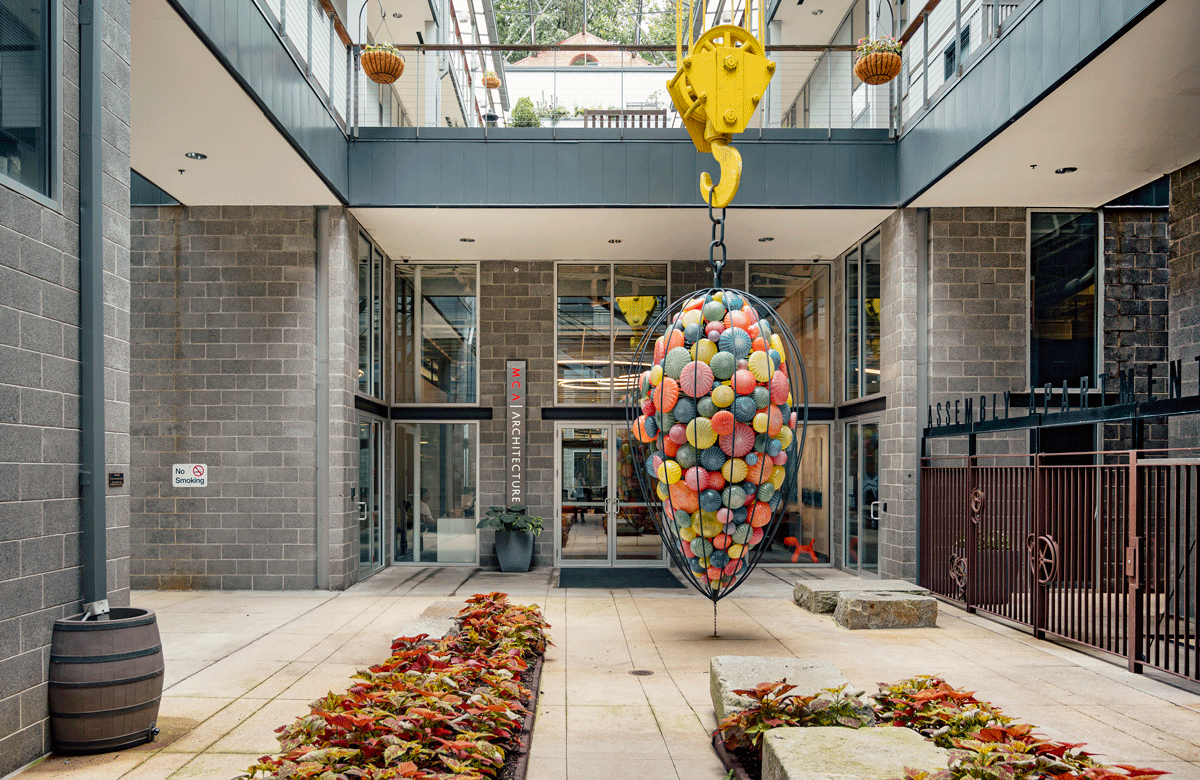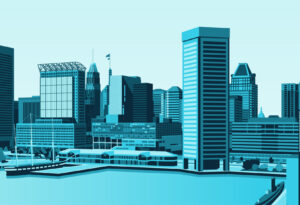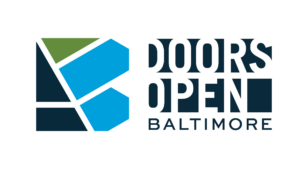
MCA Architecture. Photo courtesy Andrew Nagl.
Explore the factories along the Jones Falls, from the textile to the iron industry. See the oldest steel and glass house in the country and its immense variety of plants. And take a look at what people today are making in the valley!
Start/end your tour at the Blue Pit BBQ (1601 Union Ave), which is offering offering a special Doors Open seasonal cocktail.
MCA Architecture
The buildings at Clipper MiIl originally housed the Pool & Hunt Foundry and Machine Works, at its peak the largest machine shop in Maryland. The company forged and fabricated a vast number of iron and steel industrial components, from giant water wheels to battleship turrets. The columns for the peristyle of the Capitol Building in Washington DC were fabricated here, as well as the columns of the Hampden library. MCA Architecture is located in the erecting shop where the company’s largest machines were assembled. Take a peek inside this unique office. Presentations and tours available.
Amaranthine Museum
In 1977, Les Harris began a decade long exploration of the world within the confines of six rooms in a fallout shelter in Baltimore, MD. He created over 300 pieces of art in an installation that envelopes every surface and transports the visitor through time. The entire collection was moved to Clipper Mill where visitors can embark on a journey beginning with contemporary thought and transporting visitors back to before the beginning of man. Come visit this unique museum! The museum entrance is on the backside of the foundry building, down the back walkway.
Whitehall Mill
Whitehall Mill is one of a collection of historic textile mills located along the Jones Falls. It was originally the site of a late-18th century flour mill. In 1839, industrialists purchased it and converted it to a textile mill for weaving cotton duck, a tightly woven canvas used to make ship sails. Over the years, the mill was expanded, burned, rebuilt, renamed, and converted to a number of different commercial uses. After burning in the 1850s, the mill was rebuilt and expanded over the following three decades as business continued to grow. Textile operations ceased in 1925.
The mill was renovated into a mixed use development featuring a restaurant, market, apartments and office space, including the landscape architecture firm Mahan Rykiel Associates.
Mill No.1
Located along the Jones Falls, the original textile mill was built in 1847 and rebuilt in 1873 after a fire. The Mount Vernon Company, which operated several mills in the Jones Falls Valley, became the world’s largest producer of cotton duck in the late 19th century, supplying cotton for sails, and supplies for the army. Mill No. 1 has been repurposed as an eco-friendly mixed-use historic renovation complex that includes apartments, offices, a restaurant and new venue space in the historic Picker House.
Howard P. Rawlings Conservatory
The Howard P. Rawlings Conservatory opened in 1888 and is the second oldest steel frame and glass building still used in the United States. The conservatory originally consisted of the historic Palm House and Orchid Room. In the 1920s, production greenhouses were added to support the collection. In 2004, after a major renovation and expansion, the production greenhouses were transformed into three distinct biomes featuring plant material from tropical, desert and Mediterranean climates. Come on a tour of the conservatory and enjoy one of the finest orchid collections on the East Coast!\
Baltimore Streetcar Museum
In order to preserve Baltimore’s public transportation, the Baltimore Streetcar Museum (BSM) was created in 1966 to house a collection of 19th and 20th century streetcars. In 1885, Baltimore launched one of the first electrified streetcar lines in the country, running from Downtown to Hampden. At its peak in 1929, Baltimore’s streetcar system included over 400 miles of track. The museum houses about 20 vehicles and a transit research library. Come learn about Baltimore’s early public transit system for free or enjoy a streetcar ride for $5.


